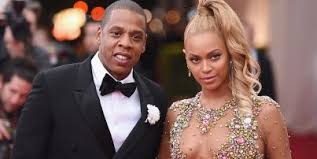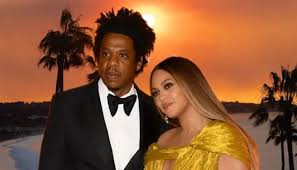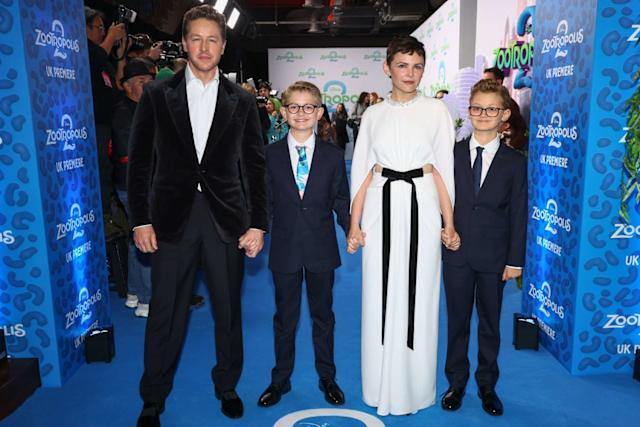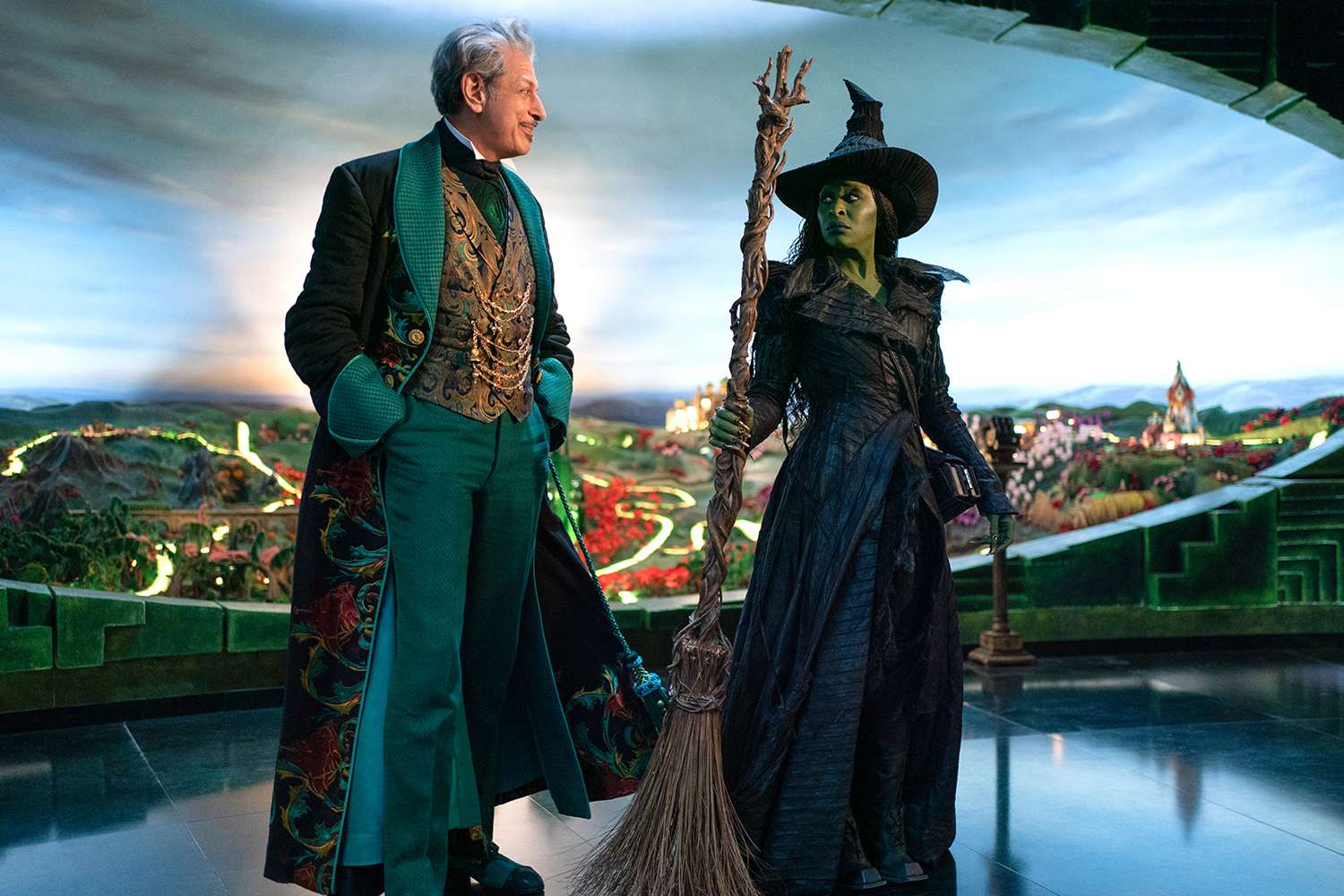Beyoncé Knowles‑Carter and Shawn “Jay‑Z” Carter once again find themselves in direct competition, this time on the stage of the 77th Primetime Emmy Awards. Like two powerful currents competing to shape the same river, they are both nominated in the Outstanding Variety Special (Live) category. The 2025 Emmys, set to take place on September 14 at the Peacock Theater in Los Angeles, will see this rare face‑off between spouses who have long stood as icons in music, entertainment, and culture.
Jay‑Z’s nomination comes for his role as executive producer on the Super Bowl halftime show that featured Kendrick Lamar. As always, through his company Roc Nation and its continued collaboration with the NFL, Jay‑Z helps select not only the performer but also is deeply involved in the production of the halftime show. This year, that special scoring a nomination in Outstanding Variety Special (Live) is just one of four nods. The Super Bowl show also earned nominations for Outstanding Directing for a Variety Special, Outstanding Music Direction, and Outstanding Choreography in the variety/reality category. Each of those nods reflects not just the performance itself, but the directing, musical architecture, and large‑scale staging—elements critical to such massive live televised events.
On the other side of the circuit, Beyoncé is nominated in the same Outstanding Variety Special (Live) category for her Netflix halftime show special, known colloquially as the “Beyoncé Bowl,” which aired on Christmas Day. She is recognized both as performer and executive producer of this special. The Beyoncé Bowl picked up a total of five Emmy nominations; Beyoncé herself is directly credited with three of those. She also shares the nomination for Outstanding Directing (variety special) with Alex Rudzinski. Among the nominations are Outstanding Choreography and Outstanding Production Design, both crucial to capturing the visual spectacle that her halftime special delivered. The Beyoncé Bowl has already earned an Emmy, winning Outstanding Costumes, which marked Beyoncé’s first Emmy win. That win was shared among her costume designer Shiona Turini; costume supervisor Chelsea Staebell; assistant costume designers Erica Rice and Molly Peters; and head of workroom Timothy White. The costumes in a performance that combines theatricality, storytelling, dance, and spectacle are often its visual signature, and the recognition reflects how central that dimension was to Beyoncé’s creative vision for the show.
The Beyoncé Bowl itself was produced by Beyoncé’s Parkwood Entertainment, in partnership with Jesse Collins Entertainment. Set at Houston’s NRG Stadium during the Christmas Day NFL game between the Baltimore Ravens and the Houston Texans, the halftime moment stood out not only because it was imbued with emotional resonance—Houston being Beyoncé’s hometown—but also because it was the first live performance of songs from her eighth studio album, Cowboy Carter. For many viewers, the moment represented not just holiday entertainment but a confluence of artistic evolution: personal roots, musical reinvention, and high production values. Beyoncé’s position as creative force—onstage, behind the scenes, in design and direction—has become ever more pronounced with this special.
What makes this Emmys matchup especially compelling is the layered history between Beyoncé and Jay‑Z, who have been married for seventeen years. Their trajectories have been intertwined for decades, both collaborators and competitors, often at the same award shows. The Grammy Awards in particular have been a recurring stage for their parallel successes, as well as their occasional head‑to‑head moments. In fact, prior to the 2025 Grammys, both of them were tied with 88 Grammy nominations each, a data point that highlighted both the parity and rivalry of their careers. When Beyoncé amassed eleven nominations in that cycle—the majority centered on Cowboy Carter—she surpassed Jay‑Z, taking the lead in those official tallies. Such moments do not merely chart award counts; they underline the evolving narrative around Beyoncé’s artistic growth, influence, and changing role in the cultural conversation, especially as she steps into more directorial, design, and production leadership in her projects.
Jay‑Z’s nomination reflects a different kind of power—his strength as a curator, producer, and institutional partner with the NFL. Being an executive producer for a show as massive as the Super Bowl halftime means managing scale: musical direction, choreography, staging, television logistics, live broadcast contingencies. The Super Bowl, globally televised, demands spectacle, mass appeal, and flawless execution. Jay‑Z’s partnership with the NFL over recent years has reframed expectations around what halftime shows can accomplish, bringing in artists who can tell cultural stories, push genre boundaries, or challenge the performance tradition. Kendrick Lamar’s involvement in the nominated show suggests an emphasis on artistry, narrative, even perhaps social commentary—not just entertainment. To be nominated across categories of directing, music direction, and choreography speaks to the overall ambition of that show, beyond just having a big name headline.

Meanwhile, Beyoncé has increasingly asserted her agency in all dimensions of her performances. The Beyoncé Bowl was not just about singing; it was about storytelling through visual design, choreography, costumes, production design, and direction. Releasing new material live for the first time, especially from an album like Cowboy Carter, meant that the performance had to both reveal new work and honor her artistic origins. Houston, her hometown, provided a backdrop deeply resonant for themes in her new album. Her performance was built to feel like more than a halftime show: an immersive artistic statement. The stage design, spectacle, costume, dance, and direction all served narrative goals as much as entertainment ones. Winning for costume design wasn’t just a decorative triumph—it was a recognition that the visual narrative and identity in a performance are as central as the songs themselves.
Both artists thus represent two sides of a coin: Jay‑Z as producer of other artists, as curator of large events, as institution builder; Beyoncé as performance auteur, bridging her roles of singer, producer, director, designer, and storyteller. Their dual nominations in the same category suggest that award shows are increasingly recognizing not only star power but the production, direction, and unseen labor that create moments that go viral, change conversation, and define cultural moments.
Looking ahead, the outcome of this Emmys competition will matter in ways beyond trophies. Winning would mark another formal recognition of Beyoncé’s expanding creative authority, particularly behind the scenes—not just on stage but in how a production comes together. For Jay‑Z, a win would affirm his continuing influence in producing mass cultural spectacles, and suggest that his partnership model with the NFL continues to pay off, not only commercially but artistically.
Their past awards history adds weight. Beyoncé’s first Emmy win for Outstanding Costumes highlights how even smaller, often undervalued crafts are being seen as central to performance art. Costume design in a live spectacle is about identity, symbolism, mood, storytelling. To have costume design honored at the Emmys shows that the production values, visual storytelling, and craft behind what people see are being emphasized. Meanwhile, Jay‑Z’s multiple nominations across technical and artistic categories underline that large‑scale televised event making is being parsed in its different components—direction, choreography, music direction—not just: “Was it good?” but “What went into making it good?”
The location and timing of Beyoncé’s halftime show added layers of meaning as well. Performing in Houston, on Christmas Day, during a highly visible football game, delivering new music in a format that’s both entertainment and unfolding event—all suggestive of her ambition to reshape how we think about live performance. The alignment of holiday viewership, hometown symbolism, newly released music, and aesthetic boldness made the Beyoncé Bowl a moment many will remember. That such a moment is now being considered among the top live variety specials is fitting.
Jay‑Z’s collaboration with Kendrick Lamar, too, reflects a melding of creative voices: Lamar’s lyricism, social awareness, and status as one of hip‑hop’s most critically acclaimed artists; Jay‑Z’s behind‑the‑scenes structures, history with Roc Nation, and experience with large production; the NFL’s appetite for high‑impact halftime shows. The nomination in multiple categories acknowledges the complexity of bringing all those threads together.
What’s also striking is the way both Beyoncé and Jay‑Z have broadened their roles beyond performer. Beyoncé’s roles in design, direction, and creative production for the Beyoncé Bowl indicate a more integrated model of artistry—where the star is not just delivering vocals but shaping the entire immersive experience. Jay‑Z, as producer of large‑scale live specials, operates similarly, though perhaps more often behind the scenes. Both reflect a shift in industry understanding: that the most memorable cultural moments are those that combine strong musical performance with strong visual identity, design, direction, theatricality, narrative.
This dynamic also feeds into larger discussions about recognition, authorship, and creative labor: which elements of production are valued, which ones are visible, which ones are awarded. That Beyoncé’s costume team is honored, that the Beyoncé Bowl gets design nods, that Jay‑Z’s shows are recognized for choreography, music direction, and direction—all these indicate a broader embrace at institutions like the Emmys of the collaborative nature of these performances.

Their competition at this year’s Emmys underscores how much both artists have invested in excellence, innovation, and scale. It is not simply about who performs better or more memorably, but about who shapes the spectacle in deeper ways: who pushes boundaries of what halftime performances can be, who integrates storytelling, design, directorial control, musical innovation, and visual narrative.
For viewers, this means that when we watch these special performances, it’s not just about star moments. There’s a rising awareness of the architecture behind them—the staging, the costume, the narrative arc, the dancers, the direction, the visual motifs. These are the pieces we often take for granted, but which make the difference between something good and something iconic. Beyoncé and Jay‑Z have long been artists who pay attention to those pieces, and now their works are being judged not only on how many fans they move, but how well all those components come together.
Already, Beyoncé has tasted Emmy victory in costume, but there are more awards on the table. Both she and Jay‑Z have multiple nominations. Beyoncé’s past successes at the Grammys—having been tied for the most nominations with Jay‑Z until recently—show the kind of career patterns and public respect that follow her. Jay‑Z’s enduring presence, generating nominations for massive live produced events, shows his staying power.
When the Emmys are awarded, and when winners are announced, the outcome will carry symbolic weight. A win for Beyoncé in Outstanding Variety Special would add to a growing recognition that she is not only a performer but a visionary creator of large‑scale visual, musical and cultural statements. A win for Jay‑Z in that category would reinforce his role as one of the central figures in producing shows that shape national conversation, culture, and entertainment. Either way, the presence of both of them in the same category suggests that the industry is paying attention to both matchless stage presence and the profound impact of what happens off the stage: the vision, the team, the production, the entire machinery.
As the 2025 Emmys approach, it is clear that beyond the usual buzz around nominations, host cities, red carpet moments, and acceptance speeches, there is here a deeper story: that two of the most prominent creatives of their generation are being recognized not just for their names or their songs, but for their roles as authors, directors, producers, designers, choreographers—even when their faces are on stage. That Beyoncé and Jay‑Z are in direct competition in a category that encapsulates everything that goes into a large live televised spectacular marks a turning point of sorts—not just in their personal narratives, but in how such artist producers are being valued in the larger cultural ecosystem.
At its core, this moment is as much about celebration as about evolution. Beyoncé’s first Emmy win, for costumes, was just one among multiple nominations that stretch across everything from production to design to direction. Jay‑Z’s nominations in directing, music direction, choreography, his role as executive producer for the halftime show, show that the mechanics of performance are no longer hidden in the background; they’re front and center. The industry is acknowledging that what audiences see is built from multitude of crafts, each deserving recognition.
When nominating bodies like the Emmys position Beyoncé and Jay‑Z in the same category, they are acknowledging this evolution. They highlight that live performance is no longer just the moment an artist steps on stage, but everything that builds toward that moment. And in that way, no matter who wins, their nominations alone reflect a broader shift toward recognizing creative wholeness.
In the end, what has long made Beyoncé and Jay‑Z relevant is not just their past accolades or chart‑topping hits, but their willingness to expand their artistic identities: to take on new roles, to shape the full scope of their performances, to demand excellence in every element—costume, set design, choreography, direction, lighting, narrative. They have built careers that are not simply about singing or performing, but about crafting experiences. And when they compete, as they now do at the Emmys, they remind everyone watching that art is made in many dimensions, that spectacle matters, and that the unseen labor behind iconic moments deserves its spotlight just as much as the artist under it.
Whatever happens at the Peacock Theater on September 14, Beyoncé and Jay‑Z’s dual nominations in Outstanding Variety Special (Live) affirm something undeniable: their artistic journeys no longer run parallel—they are deeply intertwined, often intersecting, sometimes opposing, but always contributing to the evolution of what live performance can be. And for their audiences, for their peers, for the craftsperson’s who design, build, sew, choreograph, direct, and produce, this moment is a powerful signal. It tells us that today, creating a live special isn’t just about the performer—it’s about the collective artistry, the vision, and the story behind every beat, every stitch, every visual moment, every directional choice. In that truth lies the value of their competition, the weight of their nominations, and the meaning behind what victory might look like.










